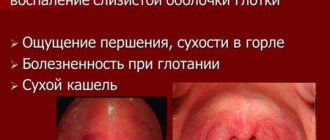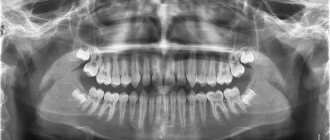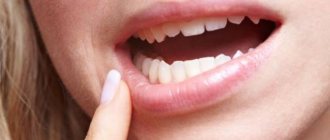If you do not completely cure or start treatment for the most common sore throat, also called viral tonsillitis , over time you may notice that balls with an unpleasant odor appear from the mouth - sure signs of advanced chronic tonsillitis .
Contrary to the assumptions of many, unpleasant lumps are not a consequence of eating certain foods - such stony discharge forms directly on the tonsils. The appearance of white lumps in the oral cavity is a sign of a serious disease at different stages, which cannot be neglected, so as not to lead the situation to the removal of the tonsils and complications in the form of diseases of the heart, kidneys and joints.
note
- Privacy Policy
White lumps in the throat with an unpleasant odor: what is it?
Small lumps that sometimes enter the mouth under certain circumstances are nothing more than tonsillar plugs or stones that form in special recesses of the tonsils - lacunae.
They can have different shapes, sizes, colors and textures, depending on their composition.
As a rule, people note white, slightly less often yellowish or even grayish bad-smelling balls. Sometimes they have a soft consistency, in other cases they are quite dense, which is due to the presence of calcium compounds in their composition.
White lumps formed in the lacunae of the tonsils are formed from aged and exfoliated cells of the mucous membrane, a small amount of food residues and various types of bacteria.
As a rule, these are staphylococci, streptococci, somewhat less frequently chlamydia and other microorganisms, that is, mainly representatives of opportunistic flora, which are constantly present in the oral cavity of every person.
Sometimes they contain pus. In such situations, they acquire a yellow tint and a characteristic odor.
When they appear, a person may feel significant discomfort, manifested by:
- sore throat;
- feeling of the presence of a foreign body behind the tonsils;
- bad breath.
Although often the formation of formations does not manifest itself in any way. A person becomes aware of their presence only when he coughs up part of the cork.
Possible complications
Since the function of the tonsils is a barrier - they protect the lower respiratory tract from the penetration of pathogenic flora into them, a failure in their work can lead to a large number of negative consequences. In addition, healthy tonsils are directly involved in the synthesis of lymphocytes and in the regulation of immune processes. When the tonsils are damaged, they begin to work against their own body and damage target organs:
- heart – rhythm disturbances, myocarditis, endocarditis, tonsillocardial syndrome, etc.;
- kidneys – nephritis, pyelonephritis, glomerulonephritis;
- liver – cholecystitis, toxic hepatitis;
- joints;
- genitourinary organs.
Systemic pathologies such as:
- rheumatism;
- psoriasis;
- polyarthritis;
- neurodermatitis and so on.
In some cases, the pathology may be complicated by a peritonsillar abscess, which requires immediate treatment in a hospital setting.
Important! After a sore throat or tonsillitis, it is necessary to donate blood and undergo a cardiogram in a couple of weeks in order to exclude the acquisition of another chronic disease due to tonsillitis.
Yellow lumps from the throat with an unpleasant odor
When yellow lumps come out of the mouth, the first thing to suspect is the presence of a purulent process. This is due to the fact that it is pus that gives the infiltrate a yellowish tint.
But sometimes crumbs are coughed up that smell strongly of rotten, even in the absence of such pronounced inflammation. In such situations, their shade is a consequence of the long stay of tonsillitis in the lacunae.
Is it possible to get rid of it on my own?
First of all, you should not allow yourself to self-medicate. This can lead to a delay in the process and surgical removal of the tonsils. Therapy of chronic tonsillitis is a rather complex and lengthy undertaking.
The disease is very common among both adults and children. Today, new methods are being developed that can provide effective measures.
The treatment regimen for tonsillitis involves an integrated approach to the problem. First of all, the doctor collects anamnesis and performs sanitation of the oral cavity. It is also necessary to optimize mental and physical stress, which greatly affects the immunological status of the body.
It is worth diversifying your diet, focusing on vegetables, fruits and seafood. Citrus fruits play a special role in the fight against tonsillitis. Good results are achieved by systematic walks in the fresh air and visiting seaside resorts 1-2 times a year.
Reasons for the appearance of white lumps on the tonsils
They usually occur in people suffering from chronic tonsillitis. This disease often results from the lack of proper treatment for the acute form of the pathology.
The following can provoke its aggravation:
- ARVI;
- weakening of the immune system;
- taking excessively chilled drinks, ice cream, etc.;
- overwork.
However, sometimes white lumps with an unpleasant odor on the tonsils are also found in absolutely healthy people who have a certain tissue structure of the tonsils and have previously had a sore throat.
Danger to the body of purulent plugs
Tonsils protect the human body mainly in childhood. They prevent infection from entering not only the respiratory tract, but also the child’s bloodstream. Tonsils take an active part in the production of lymphocytes, which helps strengthen the immune system.
- heart (tonsillocardiac syndrome, myocarditis, endocarditis is formed);
- liver (cholecystitis and hepatitis);
- musculoskeletal drug (arthritis and arthrosis);
- genitourinary system (glomerulonephritis, cystitis).
After suffering from a sore throat, 2 weeks later, you should conduct studies such as a general and biochemical blood test, and do a cardiogram.
Psoriasis, neurodermatitis, rheumatism, and polyarthritis are often observed against the background of chronic tonsillitis.
A complication of angina is very often disturbances in the functioning of the cardiovascular system
White balls from the throat with an unpleasant odor in an adult
According to authoritative medical sources, almost always an expectorated white lump in an adult is the result of a current or past sore throat that has not been completely cured. Its appearance requires consultation with an ENT specialist.
The doctor will help you accurately determine the reasons for the formation of traffic jams, the degree of neglect of the pathology, and prescribe treatment appropriate to the situation, which will give maximum results.
At the same time, patients should be prepared for the fact that therapy can stretch over a fairly long period of time and may include not only medication, but also physiotherapeutic and medical procedures.
Also, to achieve stable remission, eliminate tonsillitis and the bad breath caused by them, the therapeutic course must be repeated every six months
and regularly be comprehensively examined for the possibility of damage to other organs and the development of complications.
Patients should be aware that in severe situations, surgery may be necessary.
Benign or malignant?
Malignant tumors can be distinguished from benign ones by the following characteristics:
- Benign growths are characterized by slow growth.
- A good sign is that the growth has clearly defined boundaries.
- The absence of danger is indicated by the flat, smooth surface of the neoplasm.
- Benign formations are not characterized by the appearance of various erosions and ulcers.
- It is important that the structure of the growth tissue does not differ from the structure of the surrounding epithelium.
- It is imperative to palpate the lymph nodes in the neck. They should be unchanged, that is, not enlarged and painless.
- Only malignant neoplasms give metastases.
Important! Even benign tumors must be treated and removed, as they can become malignant.
It is also worth considering that many benign tumors do not cause discomfort to humans. Although it is impossible to rely only on this criterion, since all malignant tumors in the initial stages also do not cause pain and discomfort, and small purulent lumps on the tonsils that appear with tonsillitis or sore throat are often accompanied by pain when swallowing. The same can be said about plugs in the tonsils (tonsils), they hurt a lot and cause discomfort when swallowing, but are not malignant.
Important! All benign throat formations cause many problems when swallowing and chewing when they reach a significant size. The danger lies in the fact that they can make breathing difficult and cause suffocation.
White spots in the throat in children
In a child, the reason why white lumps form on the tonsils can be a sore throat, which is also called acute tonsillitis. Its chronic form, especially in young children, is rarely diagnosed.
With tonsillitis, the tonsils may become covered with a whitish film or small individual spots. This is always accompanied by severe pain and severe persistent sore throat, fever and weakness.
At the same time, white lumps often appear on the throat due to candidiasis - a fungal infection of the mucous membrane, which can be a consequence of decreased immunity, severe infection or severe stress.
Gradually they appear in other parts of the oral cavity, sometimes they clear the throat, but more often the plaque remains unchanged.
Why do you need to get rid of them?
Since the presence of white lumps in the throat negatively affects the state of the human immune system, and they can give impetus to the development of complications and chronic pathologies of target organs, it is imperative to get rid of them.
Keep in mind! In addition to the complications listed above, the balance of microflora in the oral cavity is disrupted, and pathogenic microorganisms begin to actively multiply. At the same time, they can penetrate the organs of the digestive tract and provoke ulcers, dysbacteriosis and other pathologies.
Diagnostics. When should you see a doctor?
In general, any person can periodically form white lumps with an unpleasant odor in the mouth. When this is not accompanied by discomfort or the formation of persistent plaque and these are not lumps of pus, no specific treatment is required.
But still, the appearance of such traffic jams should serve as a reason to contact a specialist and conduct an examination in order to determine the causes of their occurrence. For this purpose the following is carried out:
- UAC and OAM;
- ECG;
- immunogram;
- bacteriological examination of a throat smear.
These examinations are necessary to determine the existing chronic disorders and the presence of possible complications that chronic tonsillitis could cause.
How to treat white formations in the throat?
Since the main reason why white lumps appear on the tonsils is considered to be tonsillitis, in order to radically get rid of the problem it is necessary to fight this particular disease.
To eliminate it, and at the same time purulent lumps from the throat with an unpleasant odor, a set of measures is needed, including:
- washing the lacunae of the tonsils;
- antibiotic therapy;
- gargling;
- strengthening the immune system;
- physiotherapeutic procedures.
Drugs
The main direction of drug therapy is antibiotic therapy. To eliminate pathogens of the inflammatory process, the following can be used:
- Polydex;
- Isofra;
- Augmentin (Amoxiclav);
- Cefazolin;
- Rovamycin;
- Erythromycin.
To relieve pain, I advise patients to dissolve special lozenges, for example, Strepsils, Septolete, Lizak, Lisobakt, Faringosept and others.
In order to normalize body temperature, paracetamol (Panadol, Efferalgan-Upsa) and ibuprofen (Nurofen, Imet) are recommended.
Immunostimulants are also required.
They need to be taken in courses, both during the treatment period and after its completion, to ensure the persistence of remission and strengthen the immune system. These include:
- Lycopid;
- Imunofan;
- IRS-19;
- tincture of echinacea or ginseng;
- rosehip decoction;
- vitamin complexes.
Washing the lacunae of the tonsils
To remove the pellets from the lacunae (recesses) of the tonsils, it is necessary to carry out specific rinses, carried out in the otolaryngologist’s office. The procedure can be performed either using a syringe or a Tonsilor device.
Syringe rinsing is an old, but still frequently used technique, the essence of which is to pre-treat the tonsil mucosa with lidocaine and insert the tip of a special brass cannula into the mouth, which is placed on the syringe.
As soon as the anesthesia takes effect, an antiseptic solution is supplied through the cannula, the pressure of which mechanically helps to wash out the plugs and remove all pathogenic flora.
To perform the procedure the following are used:
- copper-silver solution;
- Ectericide;
- streptocide solution;
- Furacilin;
- Chlorhexidine;
- Miramistin.
This manipulation takes on average about 10 minutes, but, despite preliminary premedication, it is quite unpleasant for the patient, especially if he has a strongly developed gag reflex.
During it, it is important for the patient to remain motionless, not paying attention to the discomfort, since a sudden, careless movement can lead to damage to the tonsils by the tip of the cannula and aggravation of the inflammatory process.
As a rule, at least 7–10 sessions are required to achieve good results. Without the proper skills, it is almost impossible to wash out all the accumulations from the winding gaps.
Remember
It is strictly not recommended to carry out such a procedure at home, as it can lead to injury or lack of effect.
A more modern and gentle procedure for washing the tonsils is the hardware method, which involves the use of the Tonsilor device. Its essence is to suck out all the plugs with a vacuum.
In addition, during manipulation, the mucous membrane is exposed to ultrasound, which has an analgesic and anti-inflammatory effect. The course of treatment consists of 5 sessions held every other day.
However, any washing technique cannot be used if:
- acute period of acute respiratory infections, accompanied by fever;
- cancer;
- tuberculosis;
- pregnancy.
Almost always, completing the full course of treatment leads to stable remission, which lasts from 6 months to several years.
If you follow the otolaryngologist's recommendations aimed at strengthening the immune system, you can increase the duration of remission indefinitely.
Rinsing
One of the most common and accessible ways to eliminate the problem of coughing up white lumps with an unpleasant odor is to rinse with antiseptic solutions:
- Chlorhexidine;
- Furacilina;
- regular baking soda or pure sea salt without flavorings or other additives;
- Miramistina;
- infusions of chamomile flowers, calendula;
- saline solution or water with a few drops of essential oil, for example, cloves, juniper, tea tree and others.
Rinse thoroughly and for at least 30 seconds, tilting your head back. In the presence of an acute inflammatory process, the manipulation is repeated up to 6 times a day, and if only lumps fly out when coughing and sneezing, 2 sessions are enough: in the morning and in the evening.
Physiotherapy
To increase the effectiveness of the therapy, patients are prescribed physiotherapeutic procedures:
- UHF, which helps eliminate edema;
- ultrasound therapy necessary to eliminate inflammation;
- UV irradiation, which quickly kills pathogenic microflora;
- laser therapy, the purpose of which is to relieve swelling and inflammation.
All of them help restore normal functioning of the tonsils, their blood supply and eliminate swelling of the palatine arches. To achieve a pronounced result, 10–12 procedures are required.
Treatment at home
If the pathology is mild, the doctor may advise treating it at home with the help of medicines or traditional medicine. However, they should only be prescribed by a specialist. Activities that can be done at home :
- Flushing the throat . To do this, you can use a solution of Furacilin, a weak solution of iodine, a solution of hydrogen peroxide, an infusion of sage or chamomile. The liquid must be drawn into a syringe without a needle and directed at the tonsils. To prevent liquid from entering the respiratory tract, the head should be tilted down over the sink. The procedure is carried out 5 times a day, after which you are not allowed to drink or eat for 40 minutes.
- Inhalations . Herbal decoctions and infusions are used - oak bark, sage, eucalyptus, chamomile. A decoction of medicinal herbs or a few drops of essential oil are added to the water heated in a bowl. You need to bend over the dishes and cover your head with a towel. You need to breathe deeply, through your mouth. It is better to carry out such procedures before bedtime. At elevated temperatures, inhalation is prohibited.
- Gargling . Indispensable helpers in the fight against white lumps in the throat are iodine, salt and soda.
- Strengthening the immune system . A tincture of echinacea or eleutherococcus is recommended.
What not to do?
It is absolutely forbidden to squeeze out stones on the tonsils, or attempt to pick them out with cotton swabs, a toothbrush or other objects, since this will help remove only a small part of the formation, but will cause great harm to the body.
During such manipulations, the patient injures the mucous membrane and promotes the movement of plugs deeper into the lacunae.
All this is fraught with, at a minimum, the occurrence of painful sensations and aggravation of inflammation, and in the worst case, blood poisoning (sepsis).
When is surgery necessary?
If left untreated, pathogenic bacteria can infect the tonsils so severely that over a certain period of time they cease to perform their barrier function and become a source of infection, from where it spreads throughout the body and can cause damage to other organs.
In such situations, huge plaques form on the tonsils, white lumps regularly come out of the throat, smelling disgusting, and the patient is constantly plagued by discomfort in the throat.
In such situations, conservative therapy often no longer produces the expected results, and the otolaryngologist may recommend the patient to remove the tonsils. This operation is called tonsillectomy.
This surgical intervention is performed under local anesthesia and can be performed either by classical surgery or by more modern methods: laser, radiofrequency ablation, etc. The procedure takes little time and is characterized by a short and simple recovery period.










